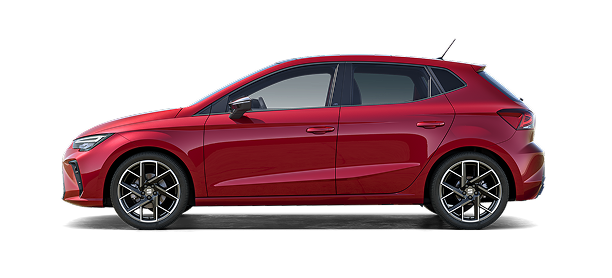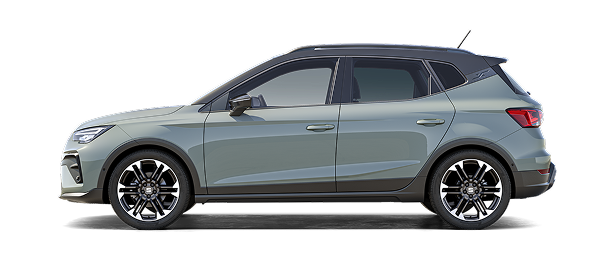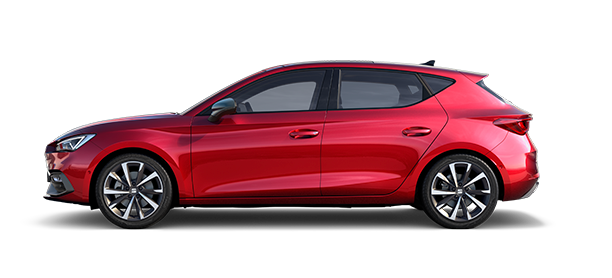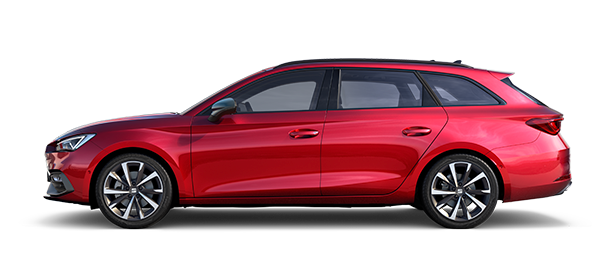Hybrid Car vs Petrol: Which is Best?
Understand the key differences between hybrid and petrol cars, and discover which option best suits your lifestyle.
What is a Hybrid Car With an Electric Motor?
Hybrid cars combine a petrol or diesel engine with electric power to help reduce fuel consumption and lower emissions. Depending on the type of hybrid, the electric motor may assist the engine or drive the car for short periods. SEAT currently offers two types of hybrid technology: Mild Hybrid (MHEV) and Plug-in Hybrid (PHEV).
How Hybrid Cars Work
Hybrid cars ingeniously combine a traditional petrol internal combustion engine with an electric motor and a battery pack. In MHEVs, the petrol engine provides the primary propulsion power, while the electric motor assists during acceleration and recovers energy from braking. The electric motor does not independently propel the vehicle in MHEVs.
In PHEVs, the car can be powered by the electric motor, the petrol engine, or both, depending on the driving conditions and the state of charge. The battery pack stores energy captured from regenerative braking, which can then be used to power the electric motor. This system allows hybrids to shut off the petrol engine when idling and use the electric motor, thereby saving fuel. Sophisticated transmission systems ensure a smooth transition between the petrol engine and electric motor.
Types of Hybrid Vehicles Available From SEAT
Mild Hybrid (MHEV)
Mild hybrid vehicles use a small electric motor to support the engine, particularly during acceleration and stop-start driving.
They don’t need to be plugged in – the battery recharges automatically while driving.
This system improves efficiency and helps reduce CO₂ emissions.
Available on models like the SEAT Leon and SEAT Leon ST.
Plug-in Hybrid (PHEV)
Plug-in hybrids offer the best of both worlds: electric-only driving for shorter and medium distances and a petrol engine for longer journeys. A plug in hybrid car can operate primarily on electric power for short and medium trips, leading to reduced fuel consumption.
You can charge the battery at home or at public charging points.
They offer lower fuel consumption and reduced emissions. Plug in hybrid cars are becoming increasingly popular due to their zero-emissions driving and increased electric-only range compared to standard hybrids.
SEAT Leon e-HYBRID and SEAT Leon ST e-HYBRID are great examples of PHEVs in the range.
SEAT’s plug-in hybrid models offer significant electric range and capacity while retaining the convenience of a petrol engine.
Since PHEV brings better driving performance and a bigger saving potential, SEAT does not currently offer full hybrid (HEV) vehicles. Also, you can use your PHEV in full electric mode. All hybrid models are either mild or plug-in hybrid.
Why Choose a SEAT Hybrid?
Benefits of Owning a Hybrid Car:
Lower emissions & fuel consumption: Ideal for city driving or short and medium commutes.
Electric support without compromise: MHEVs don’t require charging, while PHEVs give you the option of electric-only driving.
Quieter, smoother journeys: Especially in low-speed conditions or during acceleration.
Lower running costs: Reduced fuel use and less engine strain mean potential savings over time.
Economic and environmental benefits: Similar to electric cars, hybrids offer significant economic benefits, environmental impact and practicality, highlighting aspects such as tax exemptions and driving experience.
Advantages of plug-in hybrid cars: Plug-in hybrid cars offer zero-emissions driving and increased electric-only range compared to standard hybrids, making them popular and growing in market presence.Tip: charge your car with your own solar panels and reduce to 0 the electric cost.
Things to consider:
Upfront cost: Hybrid vehicles seem more expensive initially, but maximising the use of the electric mode, they can make you save money in the long term.
Charging access: PHEVs require charging to get the full electric benefits – ideal if you have the chance to charge in your private parking place or nearby public charging points.
Performance expectations: MHEV improves fuel efficiency and acceleration, so not only the sporty performance is maintained, but it is also enhanced.
What is a Petrol Car?
Petrol cars rely entirely on a combustion engine. They are typically simpler, more affordable, and widely available. SEAT offers a broad range of efficient and dynamic petrol vehicles, including the SEAT Ibiza, Leon, Arona and Ateca.
Petrol and diesel cars are often compared in terms of fuel types, hybrid technologies and future regulations affecting new car sales.
How Petrol Cars Work
Petrol cars run on a regular engine that burns petrol (also called gasoline) to create power. The engine works in four steps: pulling in air and fuel, squeezing it, setting it on fire to create power, and pushing out the smoke. This power turns the wheels and gets the car moving. Petrol engines come in different shapes and sizes, and many people enjoy the smooth, familiar feel they offer when driving.
Why Choose a Petrol Car?
What’s good:
Cheaper to buy – Petrol cars usually cost less than hybrids.
Fast to refuel – Just stop at a petrol station and you’re ready to go.
Simple tech – Easy to look after, and most mechanics know how to fix them.
Things to think about:
Fuel prices – Petrol prices rise annually and faster than electricity costs. With your own solar panels, electricity expenses can drop to 0.
More pollution – Petrol engines release more CO₂ than hybrids.
Value drops faster – They may lose value quicker than hybrids or electric cars.
Hybrid vs. Petrol: What’s the Difference in Fuel Economy?
Feature | Gasoline | Diesel | MHEV | PHEV |
Efficiency (100 km) | 5.6 – 6.2 L | 4.5 – 5.0 L | 5.3 – 5.8 L | Pure electric mode: 15.5 – 16.3 kWh |
CO₂ Emissions | 127 – 141 g/km | 119 – 131 g/km | 120 – 132 g/km | 0 g/km in Pure electric mode |
Charging Needed | No | No | No | Yes (from 0-100%~2 h 30 min AC / from 10 to 80% in 26 min DC) |
Cost per 100 km | €8.88 – €9.83 | €7.13 – €7.93 | €8.41 – €9.19 | €4.98 – €5.23 |
Comparison based on SEAT Leon model data.
The data provided are estimates based on the use of the PHEV in Pure Electric mode and are derived from WLTP consumption figures. Fuel costs are based on €1.585 per litre of petrol and €0.2236 per kWh of electricity. These values are approximate and may vary depending on actual driving conditions and other factors.
Fuel Efficiency
Fuel efficiency is one of the standout advantages of hybrid vehicles. By combining a petrol engine with an electric motor, hybrid powertrains maximise fuel economy. The electric motor provides extra power during acceleration and allows the petrol engine to shut off when idling or coasting.
The SEAT Leon e-HYBRID, for example, offers more than 100 km of electric-only range and a combined fuel consumption as low as 0.4 l/100 km (WLTP), making it a smart choice for drivers who regularly cover short distances and want to cut fuel costs.
Environmental Benefits
Hybrid cars offer substantial environmental benefits compared to traditional petrol cars. They produce lower emissions, which helps reduce air pollution, they also cut down on greenhouse gas emissions.
Additionally, plug-in hybrids can run on electric power alone for short and medium distances and reduce noise pollution.
What About Electric Vehicles?
Electric cars, also known as electric vehicles (EVs), are gaining traction due to their significant environmental benefits and lower running costs. Unlike petrol or diesel cars, an electric car relies entirely on a battery pack for propulsion, eliminating the need for a traditional internal combustion engine.
Charging an electric vehicle is straightforward, with options ranging from a standard three-pin plug to a dedicated wall-mounted charger. While the charging process takes longer than refueling a petrol or diesel car, the convenience of home charging can offset this drawback. Additionally, electric cars are eligible for a 100% discount in London’s congestion charge zone and offer tax advantages for company car users.
One of the main concerns with electric cars is their range. Although the longest-range EVs may not match the distance capabilities of petrol or diesel cars, many modern electric cars can travel 300 miles or more on a full charge. With over 950,000charging stations across 28 european countries through the Elli Charging app,and the infrastructure for electric vehicles is rapidly expanding, making them a more viable option for many drivers.
Calculate the Costs
Conducting a detailed cost analysis is essential when choosing between a hybrid and a petrol car. Calculate the potential fuel savings of a hybrid vehicle based on your annual mileage. Factor in other costs such as insurance, maintenance, and expected resale value. Online calculators can help estimate potential fuel savings and determine the payback period for the higher purchase price of a hybrid vehicle. This comprehensive overview of total ownership expenses will help you make an informed decision that aligns with your financial and driving needs.
Test Drives and Real-World Experience
When deciding between a hybrid or petrol car, taking a test drive is crucial. This hands-on experience allows you to assess the engine power, overall driving dynamics and comfort. For hybrid cars, pay special attention to features like regenerative braking,pure electric mode, and power delivery to ensure they align with your driving preferences. Test driving both hybrid and petrol versions on various terrains and under different driving conditions will give you a comprehensive understanding of each vehicle’s performance. Additionally, consider the noise levels and the comfort of the ride, as these factors can significantly impact your driving experience.
Check Real-World Mileage
While hybrids often boast impressive mileage figures, real-world fuel efficiency can vary based on driving style, terrain, and climate. Speaking with current owners of both petrol and hybrid models can provide valuable insights into the actual mileage they achieve. This feedback will help you set realistic expectations for potential fuel savings and understand how different driving habits and conditions can affect fuel efficiency.
Ensure Sufficient Charging Access
For hybrid and electric car owners, having sufficient charging access is essential. The increasing number of public charging points makes it easier to charge your car on the go, but it’s important to consider the availability and cost of charging in your area. Some employers and shopping centers offer free charging, while others may charge a fee. Planning for charging at home, work or public places ensures that you can conveniently keep your car powered.
Additionally, it’s crucial to know the type of charging point your car requires. Some vehicles need specific chargers, such as Type 2 or CCS, so ensure you have access to the correct type to avoid any inconvenience. With the right charging infrastructure in place, owning a plug-in hybrid or electric car can be a practical and cost-effective choice, offering the benefits of lower running costs and reduced environmental impact.
Which One Should You Choose?
If you’re after better fuel economy, lower emissions and future-ready driving, a SEAT hybrid – especially a PHEV – is a smart step forward.
Traditional petrol or diesel engines remain a reassurance for drivers concerned about range, highlighting tax benefits related to emissions when juxtaposing hybrids with petrol or diesel cars.
If you want simplicity, familiarity and a lower initial cost, a petrol SEAT model could be ideal for your everyday needs.
Ultimately, the best option depends on how and where you drive. Whether it’s a hybrid or a petrol car, SEAT offers modern mobility solutions tailored to your lifestyle.











